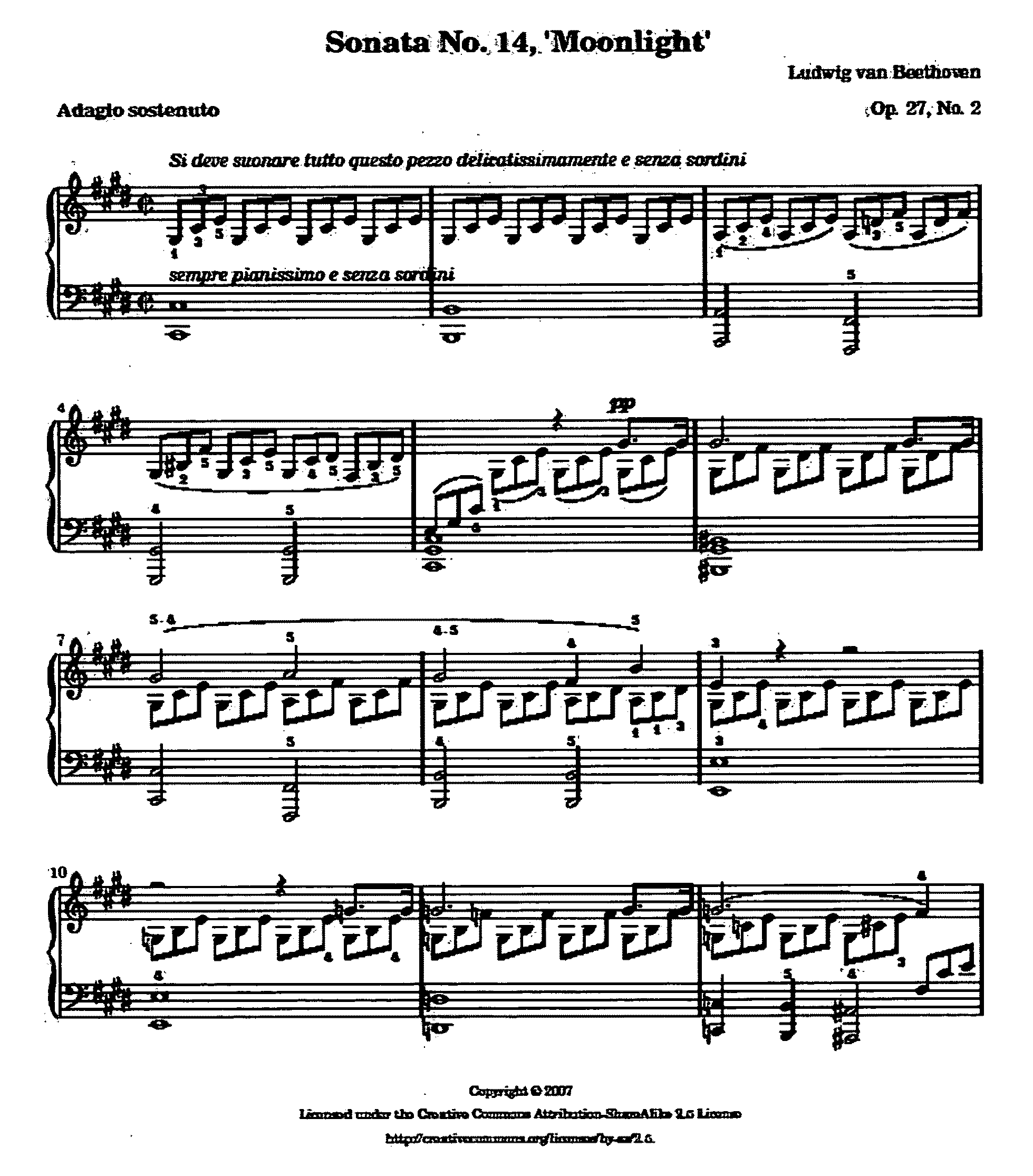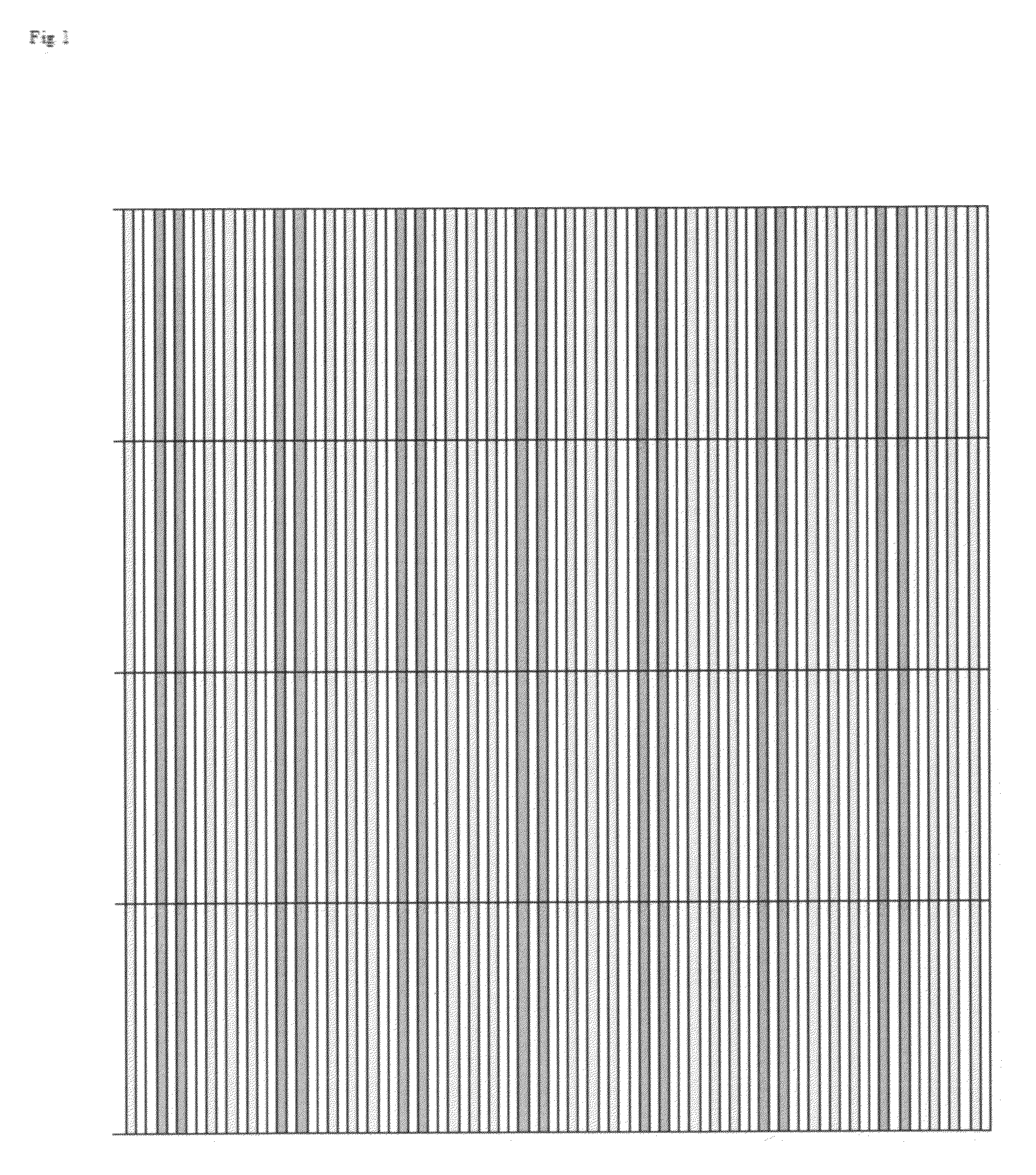Notation system for music,displaying pitches in color on a keyboard chart and having rhythmic values indicated by the vertical length of said pitches
a notation system and music technology, applied in the field of music notation, can solve the problems of not offering the same system, not producing the ability for a performer to simply play a piece of music, and unable to see the value of this system as a music notation method,
- Summary
- Abstract
- Description
- Claims
- Application Information
AI Technical Summary
Problems solved by technology
Method used
Image
Examples
first embodiment
—FIGS. 1, 2,3, AND 4—FIRST EMBODIMENT
[0017]I, Noah Epstein, have conceived of a new system for notating music which makes many improvements on the current standard notation system for music. It is a system which uses a “keyboard chart” which is a view of the piano keyboard used to display musical notes, rather than writing note heads on a staff with lines and spaces. The keyboard chart displays notes from left to right on the page, going from low notes to high notes, displaying the full width of the standard 88-key piano in the first embodiment of this system. However, it is not necessary for an embodiment to display this full range for pieces which do not use the full range of the keyboard. Time and rhythm are displayed vertically, so the performer reads the score from the top down to the bottom, scanning left to right for notes to be played at any given instant. Below is a more detailed verbal explanation of the system.
[0018]Rhythm:
[0019]Rhythm is written in a way that is meant to...
PUM
 Login to view more
Login to view more Abstract
Description
Claims
Application Information
 Login to view more
Login to view more - R&D Engineer
- R&D Manager
- IP Professional
- Industry Leading Data Capabilities
- Powerful AI technology
- Patent DNA Extraction
Browse by: Latest US Patents, China's latest patents, Technical Efficacy Thesaurus, Application Domain, Technology Topic.
© 2024 PatSnap. All rights reserved.Legal|Privacy policy|Modern Slavery Act Transparency Statement|Sitemap



